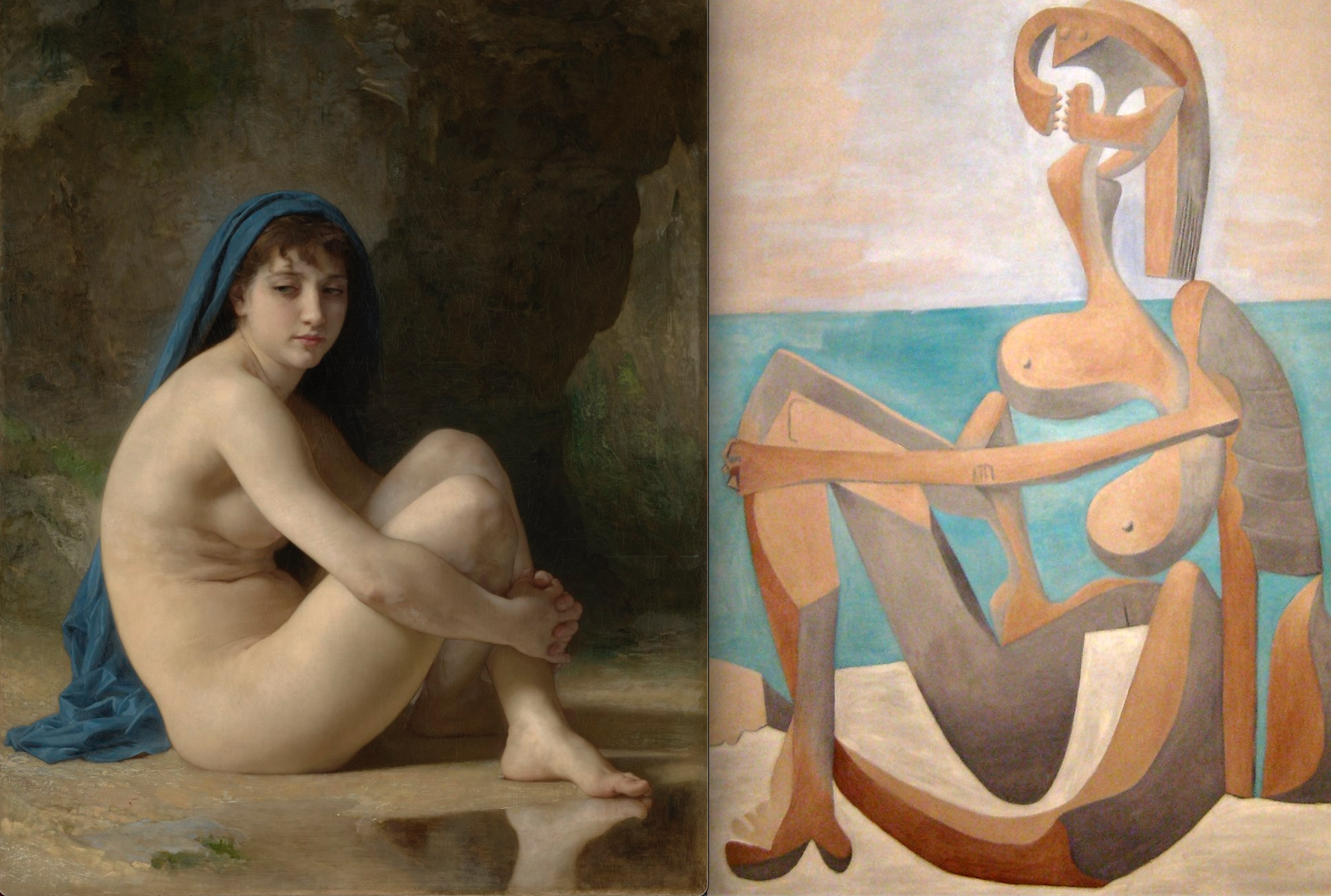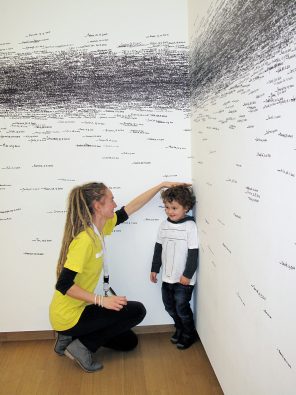Assignments for chapter 3: identity¶
Reading assignment¶
- Kozel, S., 2007, Closer. MIT Press. Of this we read §§1.6 - 1.9 (pp.32-47).
Info
This book is readily findable in the Hanze Mediatheek; you can even (legally) download an eBook-version of it.
Questions
-
In the text, Kozel states that computational systems are like art; they create much more complex relationship between the inside and the outside, between bodies and the world (p.32).
-
Can you come up with explicit art-examples that challenge the relationship between the inside and the outside?
-
How does Kozel's observation relate to the statement by Jos de Mull (that we encountered in the presentation on posthumanism), that informational sciences are modal sciences: they try not to model the world but to create it?
-
-
Kozel paraphrases Merleau-Ponty: just as I see and what I see sees me back, I touch and am touched by objects. One can easily see that as one hand touches the other, the other hand also touches the first one. But how this statement hold when we think about inanimate object like chairs? Can you come up with things that you can see but are (in principle) untouchable?
-
On pages 38-39, Kozel is talking a lot about dancing (she is also a professional dancer). Here, she seems to suggest that the 'uncertain dynamic' is a necessity for the (human) body; that identity is only achieved 'through a distance being incorporated into the self through the emigration into the outside.' (p.39). In what way do you think that (your) identity is related to your observations, and vice versa?
-
On pages 46-48 she is (again following Merleau-Ponty) talking about the 'where' of the paintings of Cézanne. Can you identify the 'where' and the 'when' of computer games, even if they have some sort of narrative (like Mario Cart)?
We will visit Merleau-Ponty at quite some length when we talk about perception.

La Baigneuse and Seated Bather¶
Have a look at the image below; on the left side, we see the Baigneuse Accroupie (Seated Bather) by William-Adolphe Bouguereau, on the right side we see La Baigneuse by Pablo Picasso.

Exuding innocence and guile in equal parts, the bather seems aware of being watched; her look is both somewhat embarrassed and also a bit gratified. Her legs are drawn close to her body, as if in an attempt to cover her nakedness. Her shoulders and her pensive expression give her an air of vulnerability – although, if you look carefully, you may notice the barest shadow of a knowing smile on her face.
Picasso inverts all that, beginning with the pose of the baigneuse. Where Bouguereau painted his bather for his audience, Picasso seems to paint it against them. The painting no longer invites its viewers to enter and look; it is now the predatory, threatening figure almost protruding from the canvas, that is doing the watching.
Because the baigneuse's face can't possibly express anything, it is impossible to tell if she sits in plain view because, like an insect, she lives in a world to which human observers are altogether irrelevant or because – as the aggressive forward thrust of her right leg may suggest – she is daring the viewer to draw near as he would have approached the gentle bather of which she is the sinister transformation.
Questions
-
Even though Picasso made his Baigneuse with a clear link to Bouguereau's bather, one can clearly see that they are not identical. Would you say that the one is a variation of the other, or is it more like a parody?
-
Would you say that both works benefit by the other one? Is the bather more enjoyable because you know about the bagneuse? Can you give examples of artworks that become more interesting when you know the works they are referring to?
We will revisit these two works in week 7, when we talk about immediate transparancy and hypermediacity.
Measuring the universe¶
This performance artwork bij Slovak artist Roman Ondák consists of lines drawn at the heights of particular individual visitors to the venue (e.g. MoMa). A cross between a site-specific installation and an event open to everyone, the work begins as an empty white gallery. As visitors enter the room, they are invited to stand against the wall and have someone mark off their height and label it with their first name and the date of their visit. As the artist describes it: “Every visitor [who] enters my room is welcome to be measured. And participation of people is very spontaneous.”

Also have a look at Ondák's own description of this work on YouTube.
Questions
-
How does the identity of all the (individual) visitors help to create the identity of this work?
-
Ondâk performs this work on several occasions and different venues. Still, in the end the results are quite indistinguishable from each other. Would you say that these results are identical?
-
Can you come up with a similar idea (either existing or one of your own) to have lots of individual identities create one piece together?
Portrait of Lotte¶
Portrait of Lotte is a time-lapse video made by the Dutch filmmaker Frans Hofmeester. In shows the development of his daughter (Lotte, hence the name of the work) as a newborn in 1999 into a teenager some twenty years later.
Hofmeester began shooting short footage of his daughter Lotte every week since the day she was born in 1999. He explains, “She was changing at such a rapid pace, that I felt the need to document the way she looked, to keep my memories intact.” After twelve years of filming her, he started doing the same with his son Vince. By splicing his years of footage together to create two time-lapse videos, viewers are able to watch his children grow up in less than six minutes.
Questions
-
Can you see the identity of Lotte change while watching this video? Or is there something that is constant and unchanging?
-
Some philosophers have stated that our identity is related to our feeling connected to ourself throughout time. We might change and the world changes as well, but there is some part of us that keeps constant. Can you give personal examples of events or things that relate this view to your own biography?
Engelsche Suite No.3¶
Listen to the the first movement (the Prélude) of the English Suite by J.S. Bach (BWV808). You can easily find this online, but I have provided a performance by Glenn Could for easy reference:
In this piece, we hear a small melody recurring several times over. However, with each repetition, it changes a little bit – by tone, tempo or structure. Still, we are able to recognize the theme, even though it is perhaps not identical but rather similar...
Questions
-
We hear the same theme occuring in this work, but in different forms or variations. Can you identify (!) some of the themes? What, do you think, is the difference between identity and variation?
-
Especially in classical music, there is some virtue in performing a good copy of the original intended piece. How do you relate to this virtue? Is a performance that is indistinguishable from another equally good?
-
Lots of music bands perform covers of other bands. However, these bands always bring in their own style and musical ideas (e.g. Richard Cheese has made a whole career out of this concept). How is it possible that we identify these pieces as being a cover from another? Where is the identity of the two pieces?